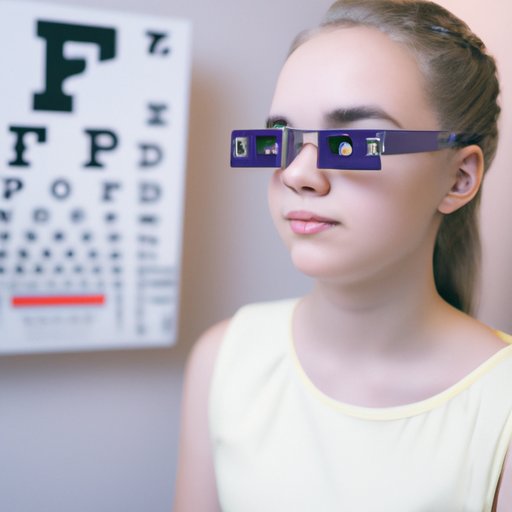
An Overview of the Two Most Common Vision Problems
Vision problems affect millions of people around the world, ranging from mild to severe. While some vision problems are rare, there are two that are the most common: myopia and hyperopia. Understanding what these vision problems are, how they are diagnosed and treated, and how to prevent them is important for anyone who may be affected.
Definition of Vision Problems
Vision problems, also known as refractive errors, occur when light cannot properly focus on the retina at the back of the eye. This results in blurred or distorted vision. The most common types of vision problems are myopia (nearsightedness), hyperopia (farsightedness), astigmatism, and presbyopia.
Types of Vision Problems
Myopia is a type of refractive error where close objects appear clear, but distant objects appear blurry. It occurs when the eyeball is too long or the cornea is too curved, which causes light to focus in front of the retina instead of directly on it. Hyperopia is a type of refractive error where distant objects appear clear, but close objects appear blurry. It occurs when the eyeball is too short or the cornea is too flat, which causes light to focus behind the retina instead of directly on it.
Prevalence of Vision Problems
Vision problems are incredibly common, and their prevalence is increasing due to lifestyle changes and environmental factors. According to the World Health Organization, approximately 1.5 billion people worldwide have myopia, and an estimated 600 million people have hyperopia. Additionally, the prevalence of myopia is expected to double by 2050.

Causes and Symptoms of the Two Most Common Vision Problems
Myopia
Myopia is caused by a combination of genetic and environmental factors, such as spending too much time looking at digital screens, reading in poor lighting conditions, or not getting enough outdoor activity. The most common symptom of myopia is difficulty seeing clearly at a distance. Other symptoms include eyestrain, headaches, and squinting.
Hyperopia
Hyperopia is usually hereditary, but lifestyle factors such as lack of outdoor activity and excessive near work can increase the risk. The most common symptom of hyperopia is difficulty seeing clearly up close. Other symptoms include eyestrain, headaches, and squinting.

The Impact of the Two Most Common Vision Problems on Quality of Life
Having a vision problem can significantly impact a person’s quality of life. People with vision problems often experience difficulty performing daily tasks, such as reading and driving. They also face a higher risk of injury or accident due to impaired vision. Additionally, vision problems can lead to social impacts, such as feeling self-conscious about wearing glasses or contact lenses.
Diagnosing and Treating the Two Most Common Vision Problems
Eye Exam
If you experience any of the symptoms associated with vision problems, it is important to get an eye exam. During an eye exam, your doctor will measure your refractive error and determine whether you need glasses, contact lenses, or vision therapy. Depending on the severity of your vision problem, you may need to undergo additional tests, such as a retinal exam.
Treatment Options
The most common treatments for vision problems are glasses or contact lenses. In some cases, surgery may be recommended. For example, laser vision correction can help correct myopia and astigmatism. Additionally, vision therapy can help improve visual skills, such as focusing and tracking, which can help reduce the symptoms of vision problems.
Prevention Strategies for the Two Most Common Vision Problems
Although vision problems are often hereditary, there are steps you can take to help protect your eyesight. Wearing protective eyewear, eating a healthy diet, practicing good hygiene, and having regular eye exams can all help prevent vision problems. Additionally, quitting smoking and avoiding excessive alcohol consumption can help reduce the risk of developing vision problems.
Vision problems can have a significant impact on quality of life, but with the right knowledge and prevention strategies, the effects can be minimized. Understanding the causes, symptoms, and treatments for the two most common vision problems – myopia and hyperopia – can help people manage them and maintain their quality of life.


